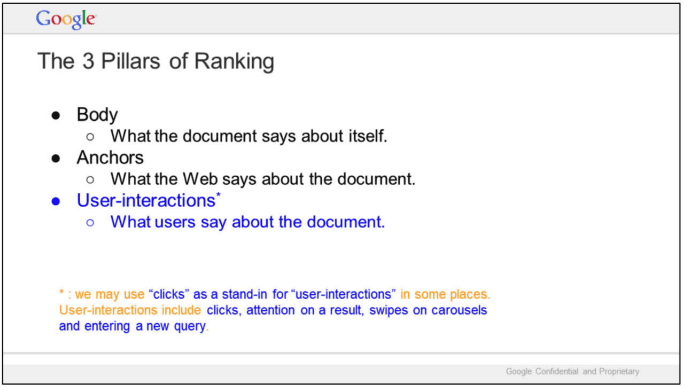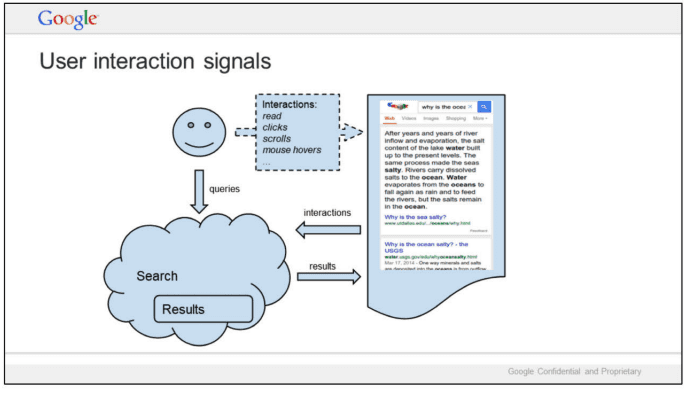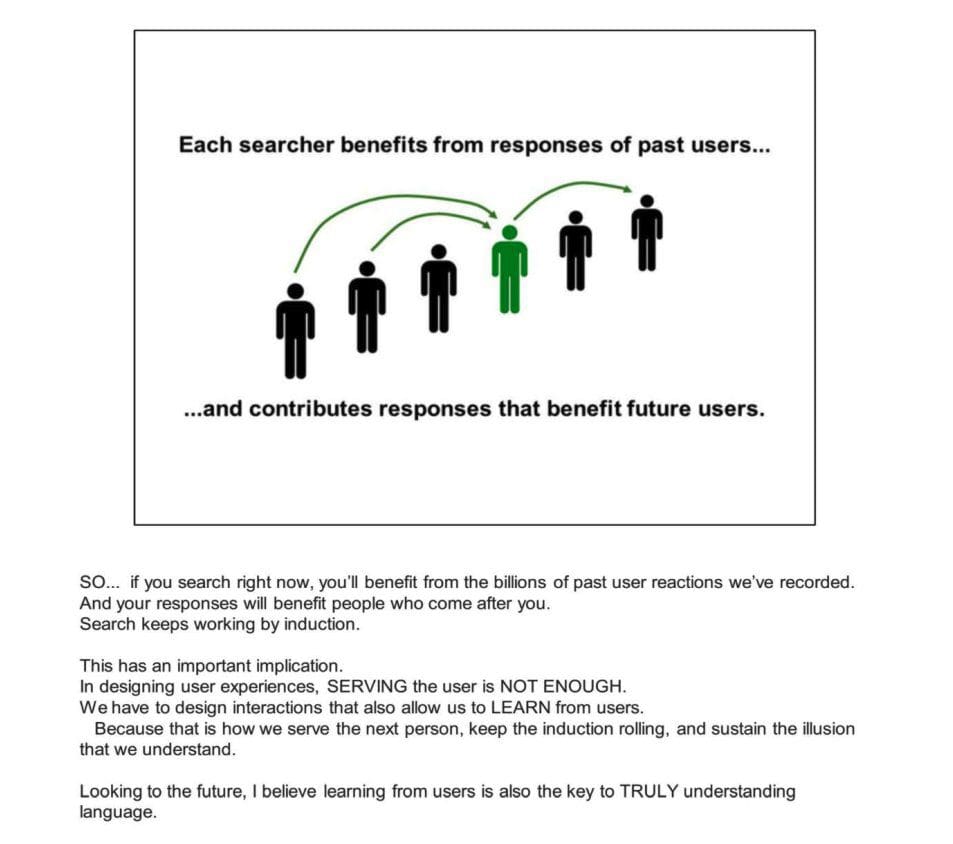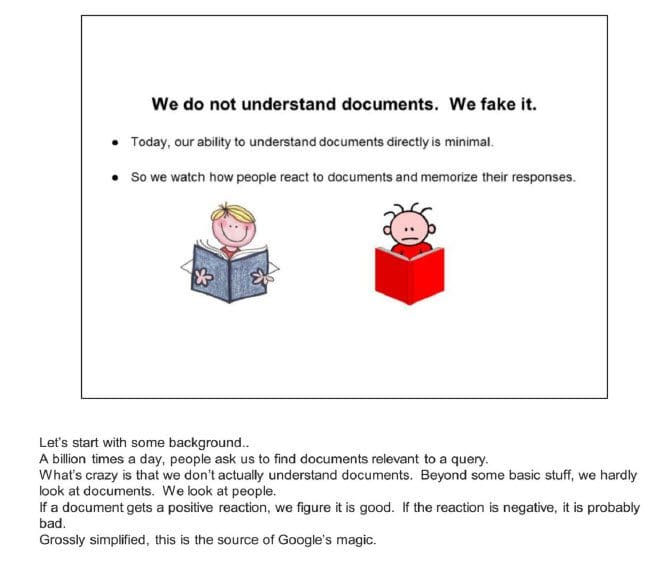Since E-A-T and E-E-A-T have become such a big deal for SEOs, there have been a lot of discussions in certain circles about optimizing sites to improve user metrics. Scroll, clicks, page views, and other user interactions were cited by many to be tracked by Google as a way to “judge” the value of your pages when considering rankings.
But what if we are looking at the wrong user interactions?
What if Google only cares about how a user interacts with its search results pages to determine CTR rates?
The case can be made that that is precisely how they use CTR and user metrics in their ranking algorithm, making a lot of sense.
We get a little insight into the algorithm due to the ongoing legal case and discovery documents released. That insight potentially supports the argument that SEOs may be concerned too much about user metrics from a ranking perspective.
First, we have a slide titled “3 Pillars of Google Ranking”.

The amount of attention paid to user interactions is pretty significant. But all of the examples of those interactions relate directly to how the user interacts with the result on their own search result pages. The slide doesn’t reference the source document at all.
As an aside, the real gem of information on that slide has nothing to do with user metrics, and 100% of the SEOs that referenced this image have completely glazed over it.
Second, we have this slide titled “User Interaction Signals”.

This slide documents exactly how Google is/was measuring user interactions for ranking placements. Note that it does not reflect the documents but the search results. Specifically, it measures the user interactions of “read, clicks, scrolls, and mouse hovers,” some of which are now default “Goals” in Google Analytics 4 that users are highly encouraged to activate.
Those tracked goals result in events firing in Google Analytics and could theoretically be used as a ranking determinator. Still, they would have to require all sites using GA4 to turn on the functions and apply the proper code to get the best result.
So, it’s highly unlikely they are using that information for ranking purposes. More than likely, they are using it for the most highly trafficked websites to assist in analyzing ad performance and placement.
Third, we have the document titled “Benefits from Past Users”.

This one is pretty straightforward.
As other users interact with the search results, they modify the results, and probably the snippets, etc, for the next users.
Rinse and repeat.
Also, I would like to point out that even Google says that “SERVING the user is NOT ENOUGH.”
I believe what they are saying, more specifically, is that providing just the results without the proper design elements that encourage interactions wouldn’t be helpful for how they are leveraging user interactions.
This is something good to remember for conversion optimization.
Finally, we have the last document titled “We Fake It”.

This is the only released document mentioning “documents” other than the search results.
The admission that Google doesn’t read the written word is of interest.
It also notes that Google measures how people react to documents, which could be user interactions on the page. It could also be something as simple as “ping-ponging” back the search results. Or, when a user setting results in opening a new tab, clicking on multiple listings, and rating the last one clicked as “the best” in that result.
Are We Wrong To Worry About User Interactions?
From the perspective of someone addressing conversions and conversion rate optimization, I say absolutely not. User interactions indicate how buyers make decisions in our markets and how our web design and development influence those interactions, including clicking to buy.
But if you are addressing user interactions on your website in the hopes of translating to Google ranking your web pages, I think you are wasting your time.
There is zero evidence in any of the documents referenced OR in testing published on the web to indicate that any of the on-site user metrics Google collects with Chrome or Google Analytics is being used as a ranking factor.
Yet.

